Alright, True Believers! So, players have jumped into the vibrant, chaotic world of Marvel Rivals, picked their favorite hero (or villain!), and are ready to unleash some serious super-powered mayhem. But then, a choice appears: "Quick Play" or "Ranked"? What's the big difference, and why pick one over the other? Think of it like deciding between a friendly sparring session with Spider-Man in the training room versus a full-blown, Avengers-level crisis where the fate of the timeline (or at least some serious bragging rights) hangs in the balance! Both modes offer a ton of fun, but they serve up very different flavors of action. This guide will break it all down, so players know exactly where to take their extraordinary talents. The choice between these modes isn't just about a few rule changes; it reflects a difference in player mindset and the kind of experience sought from a gaming session.
Quick Play
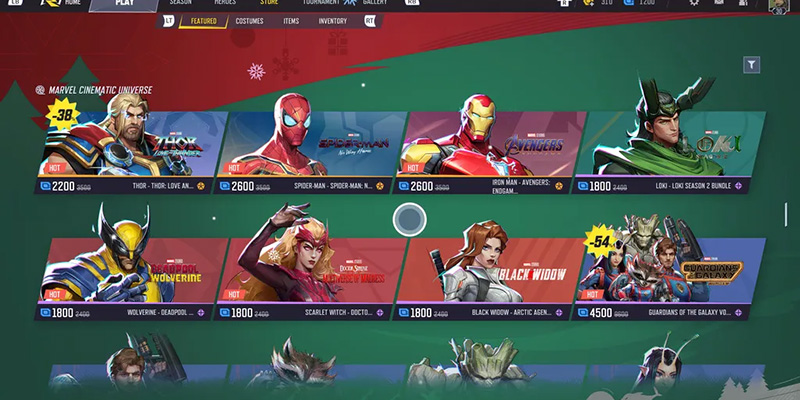
The Casual Experience
Quick Play is the go-to destination for a more laid-back Marvel Rivals experience. It's the perfect spot to hop in, try out that newly unlocked hero (perhaps even the adorable Jeff the Land Shark!), or just blast some energy without the looming pressure of a precious rank on the line. Many players view Quick Play as a "casual mode," utilizing it as a "low-stakes way to learn new heroes or complete challenges". Matches here are generally faster, can feel a bit wilder, and often feature a broader mix of player skill levels and team compositions.
This mode serves as an essential, pressure-free environment for onboarding and experimentation, which is incredibly important for the overall health of the game. If players, especially those new to the game or trying out unfamiliar characters, were forced directly into high-pressure scenarios, it could hinder player retention and the willingness to experiment with the diverse roster. Quick Play mitigates this, making the game more accessible and enjoyable for a wider audience. Interestingly, while it's labeled "casual," some players report finding surprisingly dedicated team play within Quick Play. There are accounts of players in Quick Play adhering to balanced team structures like the 2-2-2 (two Vanguards, two Duelists, two Strategists) setup more consistently than in some lower-ranked matches, where "autolocking" a preferred hero without considering team needs can be more common. This suggests a segment of the Quick Play population might be "serious casuals" – players who prefer the mode's atmosphere but still play with a degree of strategic intent, perhaps even using it as a more structured practice ground than its "wild west" reputation might imply.
Game Modes & Structure
In Quick Play, players will find themselves battling it out across three core objective-based game modes: Convoy, Domination, and Convergence. These modes form the backbone of Marvel Rivals' team-based action. It's worth noting that Domination is unique among these in Quick Play as it features multiple rounds by default, playing out as a best-of-three series.
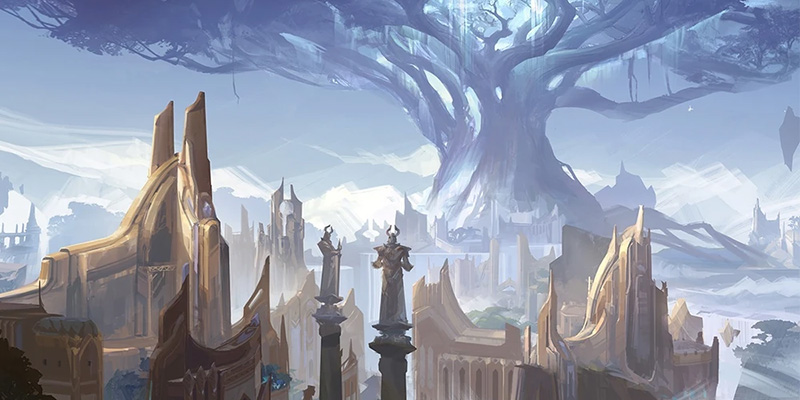
One of the most significant distinctions lies in match length and structure, particularly for Convoy and Convergence. In Quick Play, these modes are typically contested over a single round. If a team is on offense, their goal is to push the objective as far as possible within the time limit or to the end; if on defense, they aim to halt that progress. This format keeps the action moving swiftly. Domination, however, maintains its best-of-three structure in both Quick Play and Ranked, meaning players will engage in at least two, and possibly three, mini-rounds to secure control of the points. This single-round approach for escort-style modes in Quick Play clearly prioritizes rapid engagement and reduces the time commitment for an individual match. This design caters to players who might have limited playtime or who prefer to experience a variety of matches or heroes in a single session, reinforcing the "quick" in Quick Play.
Party System & Matchmaking
Quick Play offers much more flexibility when it comes to forming parties. While Ranked mode imposes strict limitations on grouping based on player ranks, Quick Play generally allows players to team up with friends more freely. The system allows for "Any group size" in Quick Play, making it easy to assemble a dream team of Avengers, X-Men, or any chaotic combination of heroes and villains one can imagine.
The maps encountered in Quick Play for Convoy, Domination, and Convergence are generally the same ones featured in Ranked play. This is advantageous because any map knowledge gained in Quick Play—learning sightlines, flank routes, and objective locations—directly translates if a player decides to venture into the Ranked queue. However, it's important to be aware that Ranked mode can feature seasonal map rotations, which might see some maps temporarily "retired" and new ones introduced, such as "Hellfire Gala - Krakoa" for a particular season. Quick Play might either retain a broader, more stable pool or also follow these seasonal rotations to some extent.
Backfill System
A common occurrence in Quick Play is the backfill system. If a player leaves a match, the game "constantly tries to fill a spot once a player has left". This is beneficial for keeping teams even and matches flowing. However, it also means a player might join a match that is already well underway, sometimes even appearing just in time to see the "Defeat" screen. While this can occasionally be a bit jarring, it's part of the trade-off for maintaining full lobbies in a casual environment. This backfill system is a deliberate design choice to preserve match integrity and player flow in a low-stakes setting. It stands in contrast to Ranked mode's emphasis on the sanctity of the initial match roster, where new players cannot join once a match has begun. Quick Play prioritizes keeping games active and full, even if it results in less "fair" entry points for some late-joining players. The small amount of experience points one might gain from such a late join is a minor compensation; the primary purpose is to prevent Quick Play matches from frequently dissolving due to leavers.
Progression & Rewards
A crucial point of distinction is that playing Quick Play does not directly affect a player's visible Rank Rating (RR) or Rank Points (RP). This allows for experimentation and those glorious, sometimes hilarious, fails without the fear of damaging a hard-earned rank. However, it is widely believed, and a common practice in similar games, that a hidden Matchmaking Rating (MMR) is active in Quick Play. There's a prevailing theory that "QP has some amount of hidden matchmaking in the background". So, while a player's rank icon remains unchanged, the game is likely still working behind the scenes to create somewhat balanced matches based on this hidden rating.
Players won't be earning those coveted seasonal ranked skins or other exclusive competitive rewards directly from Quick Play matches. The primary tangible reward from Quick Play is experience points (XP) that contribute to the overall account level. Leveling up can unlock new heroes or other general progression items over time. Furthermore, Quick Play is an ideal environment for completing daily and weekly challenges, which often grant battle pass XP, currency, or other cosmetic items. And sometimes, the reward is simply a bit of amusement, like the player who joined a match just as it ended, earning a "free 400 XP" for their brief appearance.
Ranked Mode
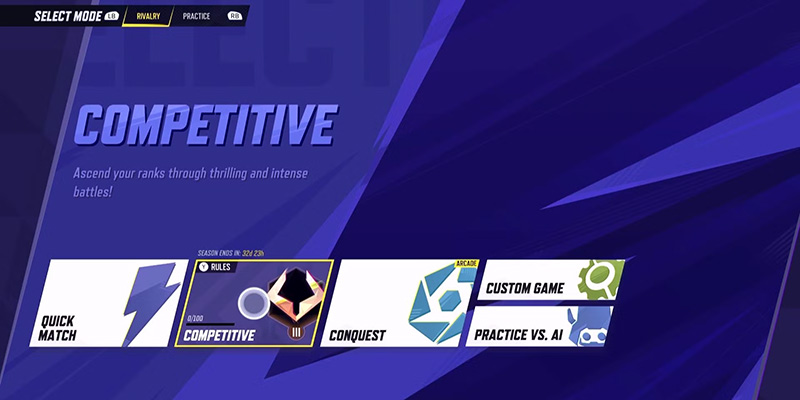
Competitive Stakes
Welcome to the big leagues! Ranked mode, often referred to as "Competitive," is where players go to truly test their skills, climb the intricate ladder of ranks, and prove they are among Earth's Mightiest Heroes (or its most cunning Villains). The stakes are demonstrably higher, matches are generally more intense, and every win or loss directly impacts a player's Rank Points (RP) and their visible rank. This progression can take players from Bronze all the way up to the god-like tiers of Eternity and the ultra-elite One Above All. The general mindset in Ranked is "playing to win", so players should expect (or at least hope for) more coordination, strategic thinking, and a focus on the prevailing meta.
The shift from the casual atmosphere of Quick Play to the focused environment of Ranked is significant. This change is driven by tangible rewards and visible progression, which can lead to more concentrated gameplay. However, this increased pressure can also, paradoxically, create an environment where player tension is higher, potentially leading to more negative interactions. While "playing to win" is the expected norm, discussions among the player base sometimes highlight issues like "ego," "flaming," and "main character syndrome" appearing in Ranked matches. This suggests that the pressure of gaining or losing RP and the allure of exclusive ranked rewards can amplify both positive behaviors like teamwork and negative ones like toxicity.
Competitive Structure
Just like in Quick Play, the battlegrounds of Ranked mode will host matches of Convoy, Domination, and Convergence. The fundamental objectives remain the same, but the structure and surrounding rules are adapted to ensure competitive fairness.
For Convoy and Convergence modes, Ranked matches are structured with two rounds. This is a critical difference from Quick Play because it ensures that "both teams [get to] attack and defend". If a team starts on offense, they will switch to defense for the second round, and vice-versa. Victory is often determined by which team pushes the objective further or completes it faster. In the event of ties, matches can go into overtime until a clear victor emerges. Domination continues to be played in a best-of-three (BO3) format. This symmetrical approach to round structure for the asymmetrical modes is a cornerstone of competitive integrity, ensuring that neither team is unduly advantaged or disadvantaged by the initial map side or role assignment. Without this, the outcome of a match could be heavily skewed by which team happened to get the perceived "favored" side or role first, a common concern in competitive objective-based shooters.
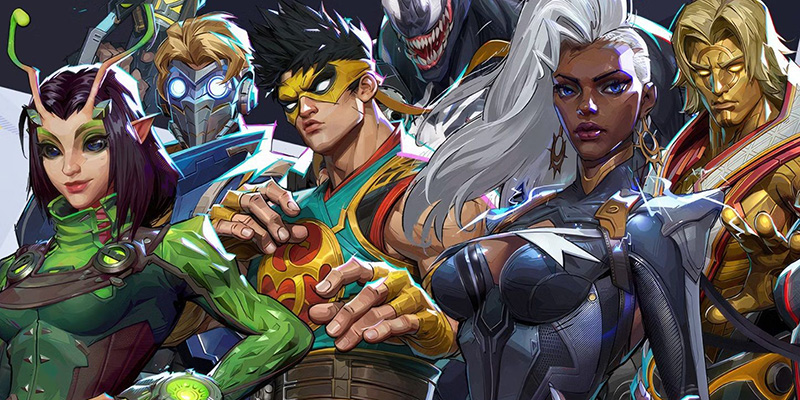
Party Restrictions
This is a major differentiating factor for Ranked play. Players cannot simply group up with anyone they choose. There are specific rules regarding rank disparity within a party, designed to maintain balanced matchmaking and prevent "boosting" (where a high-ranked player carries lower-ranked players to ranks they wouldn't otherwise achieve):
- Bronze through Gold ranks: Players can reportedly play with friends of any rank. (It's worth noting that this might be a simplification, as most competitive systems have some range limits even at lower tiers, but it's certainly the most lenient bracket).
- Gold I through Celestial ranks: Team members must be within three divisions of each other. For example, a Gold I player could queue with a Platinum III player, but not with a Diamond I player.
- Eternity and One Above All ranks: These top-tier players are restricted to solo or duo queue ONLY, and their partners must be Celestial II or higher and within 200 Rank Points of each other.
These tiered party restrictions reflect a deliberate strategy by the developers to balance the social aspect of playing with friends against the need for competitive fairness. The rules become progressively stricter at higher ranks because skill disparities at those levels have a much greater impact on match outcomes. The leniency at lower ranks (Bronze to Gold) allows friends to learn and climb together more easily. As players ascend (Gold I to Celestial), the "three division" rule helps prevent wide skill gaps that could unbalance matches. The very strict "solo/duo" queue for the highest echelons (Eternity and One Above All) is a common practice in competitive games. It aims to ensure that these top ranks are primarily a measure of individual or duo skill rather than the dominance of a full pre-made team, and it can also help manage potentially very long queue times that might arise for full teams of extremely high-ranked players.
Map Rotations
Ranked mode shares its core map pool with Quick Play. However, a key feature of the competitive ecosystem is seasonal map rotations. As noted, there are "rotations to Maps in Competitive mode, as well as tournaments". This means that certain maps might be "Retired" from the competitive pool for a season (examples given for Season 2 were Yggsgard - Royal Palace and Tokyo 2099 - Shin-Shibuya), while new maps are introduced (like Hellfire Gala - Krakoa for Season 2). This practice keeps the competitive meta dynamic and evolving. The specific list of maps available in the Season 2 competitive pool included locations like Yggsgard - Yggdrasill Path and Tokyo 2099 - Spider-Islands for Convoy mode.
These seasonal map rotations serve multiple important functions. They prevent the game's meta from becoming stagnant, as dominant strategies for a fixed set of maps would eventually become entrenched. Rotations compel players and teams to continuously learn, adapt, and innovate. It also provides the developers with an opportunity to temporarily remove maps that might have developed balance issues or are less popular in a competitive context, or to highlight and gather data on new maps in a high-stakes environment.
Pick/Ban Phase
A significant strategic layer is added to Ranked matches starting from the Gold III rank: the "Pick/Ban phase". During this phase, teams take turns banning certain heroes, preventing them from being selected by either team for that specific match. After bans, teams then proceed to pick their heroes. This introduces a substantial element of strategy, compelling teams to think critically about "strategic counter-picking" and optimal team compositions based on the map, the likely enemy strategy, and their own team's strengths. This feature was initially introduced at the Diamond tier but was subsequently moved down to Gold III, allowing a broader segment of the player base to engage with this deeper strategic element earlier in their ranked progression.
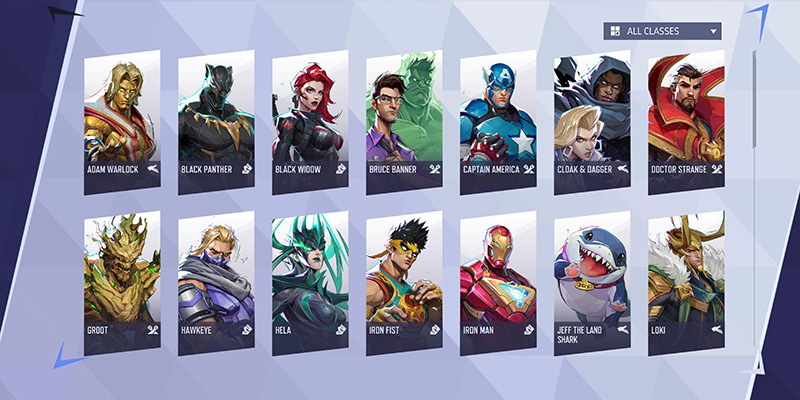
Rank Progression
This is the very essence of Ranked mode. Every match outcome directly influences a player's Rank Points (RP). Typically, a player needs to accumulate 100 RP to advance one division (e.g., from Gold III to Gold II), and consequently 300 RP for a full rank promotion (e.g., from Gold to Platinum). The system is designed to reward skillful play: winning matches against higher-ranked opponents yields more RP, while losing to teams ranked lower results in a more significant RP loss. Sustained winning streaks can even lead to players jumping entire ranks or multiple divisions at once. Beyond just wins and losses, individual performance metrics such as eliminations, assists, and objective time also play a role in how a player's RP is adjusted after a match. The entire system is built to provide "meaningful progression". The ranks ascend from Bronze, Silver, Gold, Platinum, Diamond, Grandmaster, and Celestial, culminating in the non-tiered Eternity rank and the prestigious "One Above All" title for the top 500 players.
The Ranked progression system, with its clearly defined tiers and variable RP gains and losses, is engineered not just to measure a player's current skill level but also to incentivize continuous play and improvement. Higher ranks naturally demand significantly more consistent high-level performance. The 100 RP requirement per division creates clear, achievable short-term goals for players. The fact that "winning against higher-ranked opponents gives more points" directly rewards players for outperforming expectations and allows for a faster climb if their actual skill level is above their current rank. Furthermore, the concept of the "Eternity" rank being an "infinite rank" is a clever player retention mechanic, particularly for the most dedicated and highest-skilled individuals, ensuring there's always a "number go up" element to strive for, even at the pinnacle of the ladder.
Exclusive Rewards
Performing well and climbing the ranks in Competitive mode comes with exclusive rewards, which serve as tangible symbols of achievement. A major draw for many players is the availability of unique cosmetic items, particularly hero skins. For example, the "Golden Diamond Emma Frost skin" was offered as a reward for players who reached Gold III rank or higher during Season 2. Beyond skins, players can also earn "Crests of Honor" for achieving high ranks such as Grandmaster, Celestial, Eternity, One Above All, or placing in the Top 500. These crests can be applied to a player's account profile, allowing them to "really flex your mettle". These rewards are typically seasonal, meaning they change with each new competitive season, thereby encouraging ongoing participation and consistent performance. It's important to note that these specific ranked rewards are not obtainable through Quick Play.
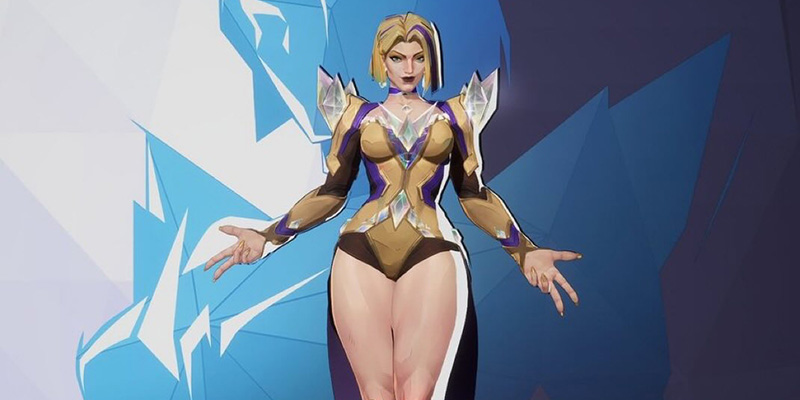
Head-to-Head Comparison
To make the differences crystal clear, a side-by-side comparison can be incredibly helpful. The following table summarizes how Quick Play and Ranked mode stack up across the key areas discussed:
| Feature | Quick Play | Ranked Mode |
|---|---|---|
| Primary Goal/Vibe | Casual fun, practice, hero experimentation, challenge completion | Competitive climb, serious play, skill testing, earning rewards |
| Game Mode Structure (Convoy/Convergence) | Single round | Two rounds, attack/defend swap, potential for overtime |
| Game Mode Structure (Domination) | Best-of-3 rounds | Best-of-3 rounds |
| Party Size Rules | Generally unrestricted, "Any group size" | Strict rank disparity rules (e.g., within 3 divisions for Gold I-Celestial; solo/duo only for Eternity+) |
| Map Pool Consistency | Shares core maps with Ranked, may have broader or more stable access | Shares core maps, but features seasonal rotations (maps retired/added) |
| MMR/Rank Impact | No visible Rank Point (RP) change; likely uses a hidden MMR | Direct RP gains/losses based on match outcome and performance; visible rank progression |
| Primary Rewards | Account XP, progression towards general unlocks, challenge completion | Exclusive seasonal skins (e.g., Golden Diamond Emma Frost), Crests of Honor, titles, bragging rights |
| Joining Mid-Match (Backfill) | Yes, common for filling empty slots | No, match roster locks after the game begins |
| Pick/Ban Phase | No | Yes, introduced starting at Gold III rank |
| Minimum Level to Play | None explicitly stated (implied to be accessible from early levels) | Account Level 15 required (increased from Level 10) |
Training & Transition Tips
Warming Up
Think of Quick Play as a personal Danger Room or a dynamic sparring session with Iron Man. One wouldn't typically charge into a major, high-stakes battle completely cold. Using the in-game Practice Range is advised to "warm up before competitive games", and Quick Play offers a similar, yet more dynamic and unpredictable, environment for this purpose. Engaging in a few Quick Play matches can help sharpen reflexes, dial in aim, and get the brain switched into "Marvel Rivals mode" before risking those valuable Rank Points in a competitive setting.
Learning New Heroes
Quick Play is unequivocally the place to take new or unfamiliar heroes for a test drive. If a player has recently unlocked characters like Adam Warlock or Venom, Quick Play provides a low-pressure setting to learn their abilities, understand their cooldowns, and get a feel for their playstyle without the anxiety of negatively impacting their rank. It's recommended to master a small pool of heroes, and Quick Play is where players can discover and refine that core group.
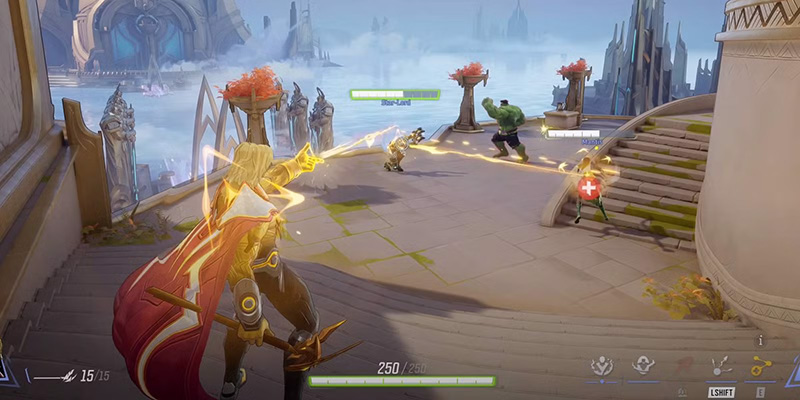
Practicing Mechanics
If a player has been practicing a specific combo, like the iconic "Fastball Special" (where Hulk can throw Wolverine), in the Practice Range, Quick Play is the ideal next step to try it against actual moving, thinking opponents. This mode is perfect for working on advanced techniques like ability cancel timing, ultimate management, and executing those impactful Team-Up Skills. It's beneficial to focus on improving one specific aspect at a time, such as "not over correcting while tracking" an enemy, and Quick Play provides the space for this kind of focused practice without the pressure of ranked consequences.
Map Knowledge
Each battleground in Marvel Rivals, from the mythical realms of Asgard to the futuristic streets of Tokyo 2099, possesses unique characteristics, including critical flank routes, health pack locations, and objective placements. Quick Play allows players to learn these intricate details without the added stress of a Ranked match. Familiarity with navigating maps like Hall of Djalia or knowing the chokepoints on Royal Palace is crucial for success, and this knowledge can be built effectively in the more forgiving Quick Play environment.
Team Compositions
A core feature of Marvel Rivals is its "Dynamic Hero Synergy", where specific hero pairings unlock unique abilities. Quick Play is an excellent laboratory for experimenting with different hero combinations to discover powerful Team-Up Skills (such as Hulk's Gamma energy supercharging Iron Man's armor for massive damage) and to find team compositions that resonate with a player's preferred style or synergize well with friends. This experimentation can lead to uncovering potent, perhaps even meta-defining, strategies.
Challenge Completion
Daily and weekly challenges often provide substantial XP or other valuable rewards. Quick Play offers a fantastic, low-pressure environment to complete these tasks efficiently, especially if a challenge requires playing a hero that a player isn't yet comfortable using in the more demanding Ranked setting.
When You're Ready for Ranked
Deciding when to make the leap from Quick Play to Ranked is a personal choice, but there are some general indicators of readiness. It's not just about meeting the minimum level requirement; it's also about a psychological shift towards a more competitive and resilient mindset, prepared for the unique pressures of ranked play.
- Comfort with a small pool of 2-3 heroes, ideally covering different roles (Vanguard, Duelist, Strategist)
- A solid understanding of the objectives for the core game modes: Convoy, Domination, and Convergence
- Meeting the minimum account level requirement, which is currently Level 15
- Being prepared for a potentially more intense atmosphere, where communication (ideally) plays a larger role
- Most importantly, possessing the desire to test one's skills against others and see how high one can climb the competitive ladder
- Only know one hero or role well
- Haven't learned map layouts and objective locations
- Get frustrated easily by losses or mistakes
- Don't understand team composition basics
- Haven't practiced basic mechanics and combos
Which Mode Should You Choose?
Ultimately, the "best" mode to play in Marvel Rivals depends entirely on what an individual player wants to get out of their gaming session at that particular moment. The two primary modes, Quick Play and Ranked, cater to distinct player needs and moods, and their coexistence is vital for a healthy game that appeals to a broad player base with varying motivations and time commitments.
- Feeling casual, looking to try out a new hero, experiment with unconventional strategies, or just have some quick, unadulterated fun with minimal pressure? Quick Play is the perfect destination.
- Ready to put skills to the ultimate test, strive for a higher rank, earn exclusive seasonal rewards, and engage in more strategic, high-stakes battles where every decision matters? Then it's time to assemble a squad (carefully, adhering to rank restrictions!) and dive into the Ranked queue.
Many players find a healthy balance by utilizing both modes: using Quick Play to warm up, learn new aspects of the game, complete challenges, or simply unwind, and then transitioning to Ranked mode for that competitive thrill and the pursuit of glory. There's no single "correct" way to engage with the game; as long as players are having a super time, they're doing it right. Now, go forth and make the legends of the Marvel universe proud!
